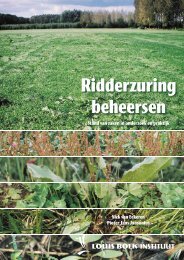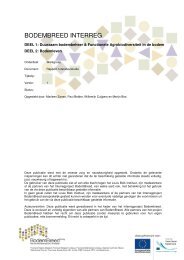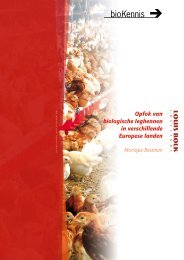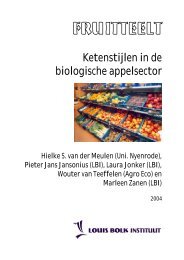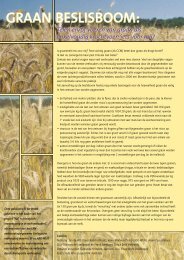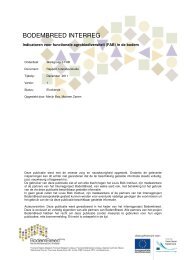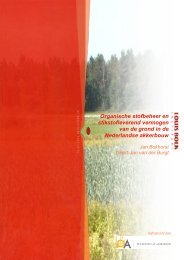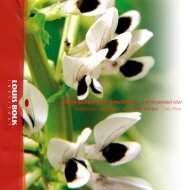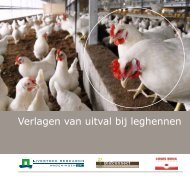Respiratory System Disorders and Therapy From a New - Louis Bolk ...
Respiratory System Disorders and Therapy From a New - Louis Bolk ...
Respiratory System Disorders and Therapy From a New - Louis Bolk ...
Create successful ePaper yourself
Turn your PDF publications into a flip-book with our unique Google optimized e-Paper software.
3.1.2. Breathing Problems<br />
The time relation between inhalation <strong>and</strong> expiration in the auscultation of normal<br />
breathing sounds is 3:2. In asthma patients, the pathological expiration sound may take<br />
as long as the inhalation or the relation may even be reversed. This symptom can persist<br />
in the symptom-free period, as with our second patient. During the acute attack the<br />
imbalance is usually much more pronounced.<br />
Obstructed Expiration<br />
The spastically prolonged expiration with wheezing is characteristic for asthma. Asthma<br />
is an obstructive pulmonary disease, patients breathe out against a resistance. The<br />
obstructed expiration is secondary to a decreased flexibility of bronchial tissue. The<br />
resistance is due primarily to a spastic contraction of smooth muscle fibers. A swelling<br />
of mucus membranes — ‘airway remodeling’ (section 2.1.2.) — <strong>and</strong> tenacious, viscous<br />
mucus can further aggravate the obstruction. In asthma, the recoil of the lung is then<br />
not able to effect expiration: to the contrary, muscular activity is needed to exhale <strong>and</strong><br />
even then may be insufficient. Expiration normally leads to relaxation after the activity<br />
of inhalation. The sigh of relief is a good example of this (see box). In asthma, especially<br />
during an exacerbation, relaxation is abrogated: the tension of inhalation is not resolved<br />
in expiration, but rather increases in the sense of fig. 2.4.<br />
The Relation of Inhalation to Heightened Awareness<br />
We can further clarify the relation between inhalation <strong>and</strong> the abovedescribed<br />
overalertness with an example. Under which circumstances does an<br />
intensification of the inhalation normally occur? When a person is startled,<br />
during mounting tension, <strong>and</strong> with an increase in chronic stress, inhalation<br />
starts to dominate. The increased awareness accompanying shock or stress<br />
deepens <strong>and</strong> accentuates inhalation. If the shock proves to be unfounded or<br />
the tension disappears <strong>and</strong> we can allow our attention to slacken, then it is<br />
most relaxing to let out a deep expiration: the ‘sigh of relief.’ In this example, it<br />
is evident that the increase in inhalation is related to being more alert, or even<br />
overalert. In hyperventilation, we can observe a similar phenomenon.




